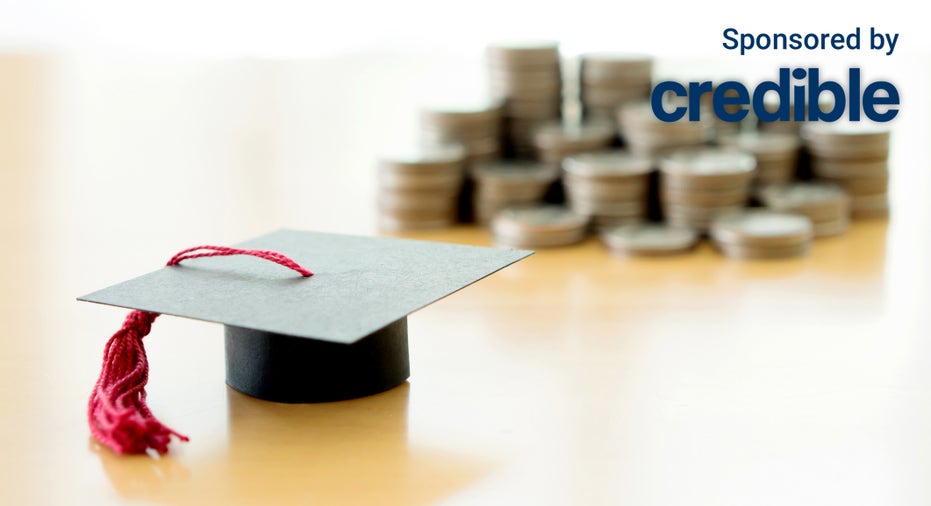Student loan programs are coming to an end while the botched FAFSA rollout continues. (iStock)
The Biden Administration has implemented a variety of student loan programs to help borrowers deal with high debts. Many of these programs are coming to an end by the end of the year.
The “on-ramp” transitionary period that began last fall is set to end in September. During this period, missed student loan payments won’t result in default or credit score hits. When the program began last October, it was intended to last 12 months to give students some breathing room once student loan payments started up again.
The Income-Driven Repayment adjustment enrollment period is also set to end by April 30th. This adjustment applies to more than 3.6 million federal direct loan borrowers enrolled in loan forgiveness programs. Through the program, borrowers have three years of credits added toward loan forgiveness, resulting in automatic forgiveness for some borrowers.
The Fresh Start program is another repayment program that ends its enrollment period in September. This program is designed for borrowers who have defaulted on their loans.
Borrowers can enroll in Fresh Start by contacting their lender or the guaranty agency that holds their loan. Once enrolled, borrowers have their defaulted loans sent to a new lender and their “in-payment” status restored. This default is also removed from borrowers’ credit scores.
To better manage your student loan debt, refinancing can help you score a lower interest rate. An online tool like Credible can be handy for comparing student loan refinancing rates from multiple lenders without affecting your credit score.
BORROWERS MEET CHALLENGES AS STUDENT LOANS RESUME AND SERVICERS STRUGGLE TO HANDLE NEW PAYMENTS
FAFSA fixes set for March
For new borrowers, the FAFSA rollout was far from smooth. The newly revamped FAFSA went live in December, but inaccurate calculations on the Education Department’s part led to incorrect award amounts for many families.
A fix is on the horizon for this error. With more than three million FAFSA applications submitted since the form went live, the update in March will be a welcome adjustment.
The Education Department is planning an update to its Student Aid Index (SAI) calculations. This will add $1.8 billion in aid for borrowers.
“Students, parents, and families continue to share with us how easy and fast it is to complete and submit the 2024–25 FAFSA form,” Federal Student Aid Chief Richard Cordray said. “We remain committed to ensuring students and families have stable and secure access to more than $114 billion in federal financial aid. We know how crucial this support is to pursue higher education, particularly for the most underserved communities, and the positive ripple effects an education beyond high school makes in the lives of millions, their communities, and the country.”
You can lower your student loan payments by refinancing at a lower rate. To see if refinancing is right for you, head to Credible to view your rates in minutes.
BIDEN CANCELS ANOTHER $5 BILLION IN STUDENT LOAN DEBT – HERE’S WHO IS IMPACTED
What to do about overwhelming student loan debt
Although forgiveness and repayment programs are ending this year, borrowers still have options that can help make student loans more affordable.
Here are a few steps to take for borrowers feeling burdened by their student loans.
- Enroll in active repayment programs: There are still plenty of repayment program options students have. The SAVE plan helps lower monthly payments for many borrowers and provides early forgiveness for others. Additionally, enrolling in income-driven repayment plans can adjust borrowers’ monthly payments based on their income.
- Contact the loan servicer before stopping payments: Before ignoring monthly payments, borrowers should contact their loan servicer. Lenders would rather work with borrowers to make a plan than risk not getting paid at all.
- Refinance student loans: Refinancing involves paying off the old loan with a new one, at a lower interest rate. This lower rate helps borrowers lower their monthly payments. However, refinancing federal loans into private ones means losing federal benefits like forgiveness options and income-driven repayment plans.
- Pick up a side hustle: A side hustle provides extra income that can be directed at student loan debt.
- Seek deferment: Borrowers facing financial hardship may qualify for loan deferment. This allows borrowers to temporarily stop making payments or substantially reduce the monthly payment.
If you’re considering refinancing your student loans, make sure to compare student loan refinancing rates before you apply, so you can make sure you find the best deal for you. Credible can show you multiple rates all in one place.
NEW STUDENT LOAN LAWS CAN HELP BORROWERS MANAGE BETTER IN 2024
Have a finance-related question, but don’t know who to ask? Email The Credible Money Expert at moneyexpert@credible.com and your question might be answered by Credible in our Money Expert column.
Credit: Source link




